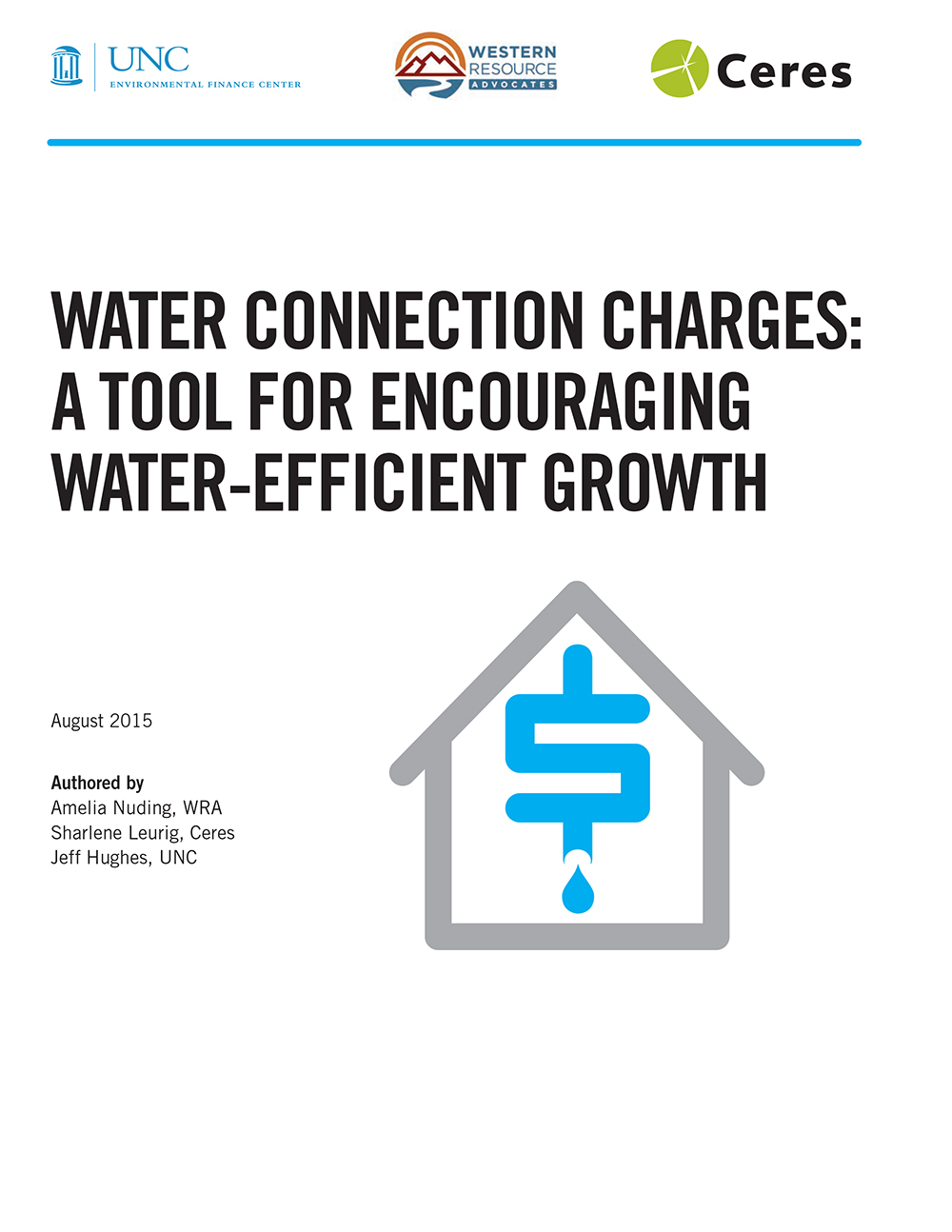
Water Connection Charges: A Tool for Encouraging Water-Efficient Growth
Water connection charges — also called tap fees, impact fees, system development charges, or plant investment fees — are one-time charges assessed to new developments to help pay for the direct costs of connecting to a utility’s water system, and for the infrastructure and water resources capacity needed to support these new developments. These one-time charges provide utilities with much-needed revenue to pay for water system infrastructure; importantly, they can
also be designed to influence water demand in new developments.
Although extensive research has been done on how to price the volume of water sold month by month in order to encourage water efficiency in residential and business customers, far less attention has been focused on structuring connection charges in ways that will encourage developers to incorporate water-saving features into project designs.
For this report, we surveyed 800 water connection charge structures used by communities in Georgia, North Carolina, Arizona, Colorado, and Utah. These states are five of the fastest growing states in the U.S. and have all experienced some degree of water scarcity and resource vulnerability. They are, therefore, more likely to have connection charges designed to influence future water demand.

